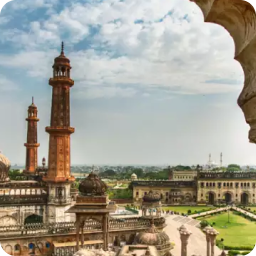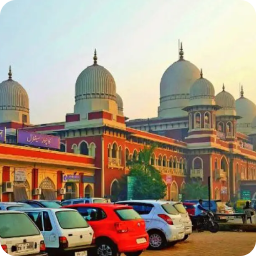India’s Banking Sector and Monetary Policy |
India’s Banking Sector and Regulatory Framework
India has 12 Public sector banks, 21 private banks in India, 45 Foreign Banks in India (as of 27 November 2020), and RBI is the central authority that manages all India’s banking operations
Money Functions and the Role of Banking Sector in India
|
PRIMARY FUNCTION
|
SECONDARY FUNCTION
|
CONTINGENT FUNCTION
|
Money Demand and Supply in India’s Banking Sector
| DEMAND | People desire to hold money for 3 motives – (Liquidity Preference Theory of Keynes)
|
| SUPPLY |
M0 = Currency in Circulation + Bankers’ Deposits with RBI + Other deposits with RBI Narrow Money: M1 is called narrow money as it is highly liquid and banks cannot run their lending programmes with this money. M1 = Currency with the Public + Demand Deposits with the Banking System + ‘Other’ deposits with the RBI.
|
Money Creation Mechanisms in India’s Banking Sector
| Fractional Banking System: |
|
| Money Multiplier: |
|
Velocity of Money Circulation in India’s Banking Sector
- It is a measurement of the average rate at which money is exchanged in an economy during a given time period.
- The velocity of Money = GDP / Money Supply.
- It will usually rise with GDP and inflation.
- The velocity of Money is high in the following case -In Developing countries, Low Income people, High Financial Inclusion, During Boom or Growth period.
Monetary Policy in India’s Banking Sector
- It is the policy under which RBI uses monetary instruments under the RBI Act, 1934, to achieve the economic goals
- Aim– to maintain price stability, economic growth.
Quantitative Tools of Monetary Policy in India’s Banking Sector
These tools help in channelising the volume of credit towards the economy. The aim is to control the economic indicators like inflation, money circulation etc.
| Quantitative Tools | DESCRIPTION | |||||||||
| Bank Rate |
|
|||||||||
| Repo Rate |
|
|||||||||
| Reverse Repo Rate |
|
|||||||||
| Long Term Repo Operations (LTRO) |
|
|||||||||
| Cash Reserve Ratio (CRR) |
|
|||||||||
|
Liquidity Adjustment Facility |
|
|||||||||
| Open Market Operations |
|
|||||||||
| Marginal Standing Facility |
|
|||||||||
| Statutory Liquidity Ratio |
|
What distinguishes India’s banking sector’s Statutory Liquidity Ratio from Cash Reserve Ratio?
| CASH RESERVE RATIO (CRR) | STATUTORY LIQUIDITY RATIO (SLR) |
| Banks are required to maintain with the Reserve Bank a certain percent of its Total Demand and Time liabilities | SLR is that percentage of the deposits which the banks have to hold with themselves |
| CRR is maintained only in cash form. | SLR can be maintained in the form of Gold, Cash and other securities approved by RBI. |
| No interest is earned on the CRR | Interest is earned on SLR. |
| Helps regulate the liquidity in the economy. | Helps regulate the Credit facility in the economy. |
| It is calculated on the banks Total Demand and Time liabilities | It is calculated on banks Net Demand and Time Liabilities. |
| The range of permissible CRR is between 3 and 15 per cent. | SLR has an upper limit of 40% and a lower limit of 23%. |
Qualitative Tools in India’s Banking Sector under Monetary Policy
- These measures help in controlling the distribution and direction of the loans to different sectors of the economy.
| MEASURES | DESCRIPTION | ||||||||||||
| Margin Requirements |
|
||||||||||||
| Credit Rationing |
|
||||||||||||
| Moral Suasion |
|
||||||||||||
| Direct Action |
|
Associated Terms in India’s Banking Sector
| Market Stabilisation Scheme |
|
| Base Rate |
1. Cost of funds (interest rates offered by banks on deposits) 2. Cost of maintaining CRR. 3. Profit margin. 4. Operating expenses to run the bank.
|
|
MCLR – Marginal Cost Of Funds Based Lending Rates |
1. Marginal cost of funds 2. Tenor premium 3. Operating costs 4. Negative carry on account of cash reserve ratio |
| Net Demand and Time Liabilities (NDTL) |
|
| Government Securities (G-Sec) |
|
| Gross capital formation |
|
| Cheque Truncation System |
|
Banks and the Role of RBI in India’s Financial Sector
- Banks are Financial Intermediaries between borrowers and lenders. It accepts deposits from the public and lends money to businesses and consumers. Its primary liabilities are deposits and primary assets are loans and bonds.
- RBI – The Reserve Bank of India was set up in 1935 by the RBI Act, 1934.
Evolution and Authority of the Reserve Bank of India in the Banking Sector
- Prior to the establishment of RBI, the functions of a central bank were virtually done by the Imperial Bank of India . RBI started its operations from April 1, 1935.
- It was established via the RBI act 1934, so it is also known as a statutory body. Similarly, SBI is also a statutory body deriving its legality from SBI Act 1955.
- RBI did not start as a Government owned bank but as a privately held bank.
- Post-independence, the government passed Reserve Bank (Transfer to Public Ownership) Act, 1948 and took over RBI from private shareholders after paying appropriate compensation.
- Thus, nationalization of RBI took place in 1949 and from January 1, 1949, RBI started working as a government owned bank.
- The RBI is the supreme monetary and banking authority in the country and controls the banking system in India.
- It is called the ‘Reserve Bank’ as it keeps the reserves of all commercial banks.
Role and Responsibilities of the Reserve Bank of India in the Banking Sector
- Monetary Authority: It implements and monitors the monetary policy and ensures price stability while keeping in mind the objective of growth.
- Regulator and Supervisor of the Financial System.
- Manager of Foreign Exchange: It facilitates external trade and payment and promotes orderly development and maintenance of foreign exchange market in India. It also maintains the external value of rupee.
- Issuer of Currency: Issues and exchanges or destroys currency and coins not fit for circulation.
- Developmental Role: Performs a wide range of promotional functions to support national objectives such as making institutional arrangements for rural or agricultural finance.
- Financial Inclusion: The Reserve Bank has selected a bank led model for financial inclusion in India. RBI has undertaken a series of policy measures. Example: No Frills Accounts – account either with nil or very low minimum balance as well as charges that would make such accounts accessible to vast sections of population, Use of Technology – devices such as ATMs, hand held devices to identify user accounts through a card and biometric identifier, Deposit taking machines and Internet banking and Mobile banking facility to provide the banking services to all sections of society with more ease.
- Banker to banks: maintains banking accounts of all scheduled banks. It also acts as a lender of last resort by providing funds to banks.
- Banker to Government: performs merchant banking functions for the central and the state governments. It is entrusted with central govt.’s money, remittances, exchange and manages its public debt as well.
TIMELINE
| 1926 | The Royal Commission (Hilton Young commission) on Indian Currency and Finance recommended creation of a central bank for India. On the basis of mainly this commission, the RBI Act, 1934 was passed |
| 1934 | The RBI Bill was passed and received the Governor General’s assent. |
| 11 April 1935 | Reserve Bank commenced operations as India’s central bank as a private shareholders’ bank with a paid up capital of rupees five crore |
| 1949 | The Government of India nationalized the Reserve Bank under the Reserve Bank (Transfer of Public Ownership) Act,1948. |
| Governor Of RBI |
|
|
| Subsidiaries Of RBI: |
|
|
| Minimum Reserve System Of RBI | 1. Deposit Insurance and Credit Guarantee Corporation (DICGC)
2. Bharatiya Reserve Bank Note Mudran Private Limited (BRBNMPL) 3. Reserve Bank Information Technology Private Ltd. (ReBIT) 4. Indian Financial Technology And Allied Services (IFTAS) |
|
| Income And Expenditure Of RBI | INCOME | EXPENDITURE |
|
|
|
| Assets And Liabilities Of RBI | LIABILITIES | ASSETS |
|
|
|
| PUBLICATIONS OF RBI | 1. Report on Trend and Progress of Banking in India-Annually
2. Financial stability report- Half yearly 3. Monetary policy report- Half yearly 4. Report on foreign exchange reserves- Half yearly 5. Bi-monthly Policy Statement 6. Industrial Outlook Survey of the Manufacturing Sector (Quarterly) 7. Consumer Confidence Survey (Quarterly) 8. Report on Financial Review |
Diversity of Banks in the Indian Banking Sector
|
Scheduled Bank |
• Listed in the 2nd schedule of the Reserve Bank of India Act, 1934. E.g. Canara Bank.
• SBs are eligible for loans from the Reserve Bank of India at bank rate. • Required to deposit CRR with RBI. • Types are – Commercial Banks and Cooperative Banks. |
|
Non – Scheduled Bank |
• Not listed in the 2nd schedule of the RBI act, 1934.
• Depends on RBI discretion • Can maintain CRR with themselves, not with RBI • Many co-operative banks are non – scheduled |
| Commercial Banks | • Public Sector Banks- more than 50% is held by the government
• Private Sector Banks-most of the capital is in private hands. • Foreign Banks |
| Cooperative Banks | • Urban
• State • Multi – State |
| Differential Banks | • Small Finance Banks.
• Payments Banks. • Regional Rural Banks. |
|
Development Bank |
• NABARD
• SIDBI • EXIM • NHB • IFCI |
| RESIDEX | NHB RESIDEX, India’s first official housing price index, was an initiative of the National Housing Bank (NHB).The scope has been widened under NHB RESIDEX brand, to include housing price indices (HPI), land price indices (LPI) and building materials price indices (BMPI), and also housing rental index (HRI). |
| BANKING SERVICE INDEX | By RBI. Base year is 2011. It measures the inflation in the fees charged by the banks for NEFT/ RTGS/ card transactions/ mobile banking etc. |
Role of Cooperative Banks in India’s Banking Sector
- A Co-operative bank belongs to its members, who are at the same time the owners and the customers of their bank.
- Under dual control of the Registrar of Cooperative Societies and RBI.
- The board of members are elected with each member having one vote.
- Cooperative banks are the primary financiers of agricultural activities, some small- scale industries and self-employed workers.
- These banks are cooperative credit institutions that are registered under the Cooperative Societies Act 1912. These banks work according to the cooperative principles of mutual assistance.
Differentiating between Payments Banks and Small Finance Banks in the Banking Sector in India
| PAYMENTS BANK | SMALL FINANCE BANK |
| • Payments Bank are based on Usha Thorat recommendations | • Small Finance Banks are established on recommendations of Nachiket Mor |
| • Can accept deposits, but only up to RS1 lakh per individual customer | • Allowed to take deposits of any amount |
| • Can’t lend in any form | • Can lend but the focus will be on small lending |
| • Can open small savings accounts | • Can finance small business, small and marginal farmers, MSME, unorganized sector entities. |
| • Can provide remittance services | • Can provide remittances as well as credit cards |
| • Allowed to issue ATM /debit cards | • Allowed to issue ATM or debit cards |
| • Not allowed to issue credit cards. | • Has to ensure that 50% of loan portfolio constitutes advances of upto RS. 25 lakh |
| • Can distribute products like mutual funds, insurance, third party loans | • Can distribute financial products like mutual funds, insurance, pension etc. |
| • Payments banks can apply for conversion into small finance banks (SFBs) after five years of operation. |
Development Banks: India’s Specialized Banking Sector
| Industrial Finance Corporation of India (IFCI) |
|
| National Bank for Agriculture & Rural Development (NABARD) |
FUNCTIONS: Undertakes monitoring and evaluation of projects refinanced by it + Regulates the cooperative banks and the RRBs + Refinances the financial institutions which finance the rural sector + Provides training facilities to the institutions working in the field of rural upliftment. REFINANCE FACILITY BY NABARD IS AVAILABLE TO: 1. State co-operative agriculture and rural development banks (SCARDBs), 2. State co-operative banks (SCBs), 3. Regional rural banks (RRBs), 4. Commercial banks (CBs) and 5. Other financial institutions approved by RBI. |
| Small Industries Development Bank of India (SIDBI) |
|
| Export-Import Bank of India (EXIM Bank) |
|
| National Housing Bank (NHB) |
|
| Local Area Banks |
|
Lead Bank Scheme: Catalyzing Rural Financial Development in India
- The Lead Bank Scheme was introduced in 1969 in which aims at providing adequate banking and credit in rural areas through an ‘service area approach’, with assignment of lead roles to individual banks (both in public sector and private sector) – one bank assigned for one area
- A bank having a relatively large network of branches in the rural areas of a given district and endowed with adequate financial and manpower resources has generally been entrusted with the lead responsibility for that district.
- On the recommendation of the Gadgil Study Group and Banker’s Committee, the Scheme was introduced by RBI. The commercial banks did not have adequate presence in rural areas and also lacked the required rural orientation which was hindering the growth of rural areas.
Non-Banking Financial Institutions: Regulations and Functions
- It is a company registered under the Companies Act, 1956.
- NBFCs are regulated by multiple regulators – Insurance Companies – IRDA, Merchant Banks – SEBI, Micro Finance Institutions – State Government, RBI and NABARD.
- It engages in the business of loans and advances, acquisition of shares/stocks/bonds/debentures/securities issued by Government or local authority or other marketable securities of a like nature leasing, hire – purchase, insurance business, chit business, etc.
- It does not include any institution whose principal business is that of: Agriculture Activity, Industrial Activity, Purchase or Sale of any goods (other than securities), Providing any services and sale/purchase/construction of Immovable Property.
| Features of NBFC are: |
|
Systemically important NBFCs and their significance in the Banking Sector
NBFCs whose asset size is of ₹ 500 cr or more are considered as systemically important NBFCs. Example: Power Finance Corporation Limited (PFCL), Rural Electrification Corporation Limited (RECL), IL&FS, etc.
Distinguishing characteristics between Banks vs. NBFCs in the banking Sector
- NBFCs cannot accept demand deposits (but some can accept Time deposits and such NBFCs are called Deposit taking NBFC).
- Unlike banks, CRR does not apply on any NBFCs while a lower SLR of 15% applies only to Deposit taking NBFC.
- NBFC do not form part of the payment and settlement system and cannot issue cheques drawn on itself.
- NBFCs get license under Companies Act, 1956 and Banks under Banking regulation Act.
- Deposit insurance facility is not available to depositors of NBFCs.
Core Investment Companies
- Core Investment Companies (CICs) are a specialized Non-Banking Financial Companies (NBFCs).
- A Core Investment Company registered with the RBI has an asset size of above Rs 100 crore.
- Their main business is acquisition of shares and securities with certain conditions.
Non-Performing Assets (NPAs) in the Banking Sector
- NPA is a loan/advance for which the principal or interest payment remained overdue for a period of 90 days.
- For Agriculture Loans the NPA is if the loan installment/interest is not paid for:
| Short duration crop loan | 2 crop seasons |
| Long Duration Crops | 1 Crop season from the due date |
Special Mention Accounts (SMA) in the Banking Sector- 2014
- SMA are those accounts that show symptoms of bad asset quality in the first 90 days itself.
- The identification is an effort for early stress discovery of bank loans.
- The Special Mention Accounts are usually categorised in terms of duration as follows:
| SMA CLASSIFICATION | BASIS FOR CLASSIFICATION |
| Standard Accounts | Loan where principal and interest payment is made timely. |
| SMA – NF | Non – Financial (NF) signs of stress. |
| SMA 0 | Loan principal or interest is unpaid for 1 – 30 days from its due date. |
| SMA 1 | Loan principal or interest is unpaid for 31 – 90 days |
| SMA 2 | Unpaid for 61–90 |
| NPA | Unpaid for more than 90 days. |
Other Loan Classification in the Banking Sector
| CLASSIFICATION | BASIS FOR CLASSIFICATION |
| Substandard Asset | Account remains as an NPA for 12 or more months. |
| Doubtful Asset | Account remains as a substandard asset for 12 months or more. |
| Loss Asset | When a doubtful asset is uncollectable with little or no salvage value. |
| Loan Write Off | Loan is written off from the asset side of the bank balance sheet. Just an accounting exercise. |
| Restructured Loan | When the principal or interest or tenure terms are modified to enable the borrower to pay the loan. |
| Stressed Asset | NPA + loans written off + restructured loans = stressed assets. |
Strategies and Tools for NPA Resolution in the Banking Sector
| 3R FRAMEWORK FOR REVITALISING STRESSED ASSETS: | 1. RECTIFICATION – Conducting ASSET QUALITY REVIEW (AQR)
2. RESTRUCTURING – Strategic Debt Restructuring, Scheme for Sustainable Structuring of Stressed Assets (S4A), Joint Lenders Forum. 3. RECOVERY – SARFAESI ACT, 2002 and Insolvency and Bankruptcy Code, 2016 NOTE: Reserve Bank of India (RBI) has set up a committee headed by K.V. Kamath on restructuring of loans impacted by the Covid-19 pandemic. |
|
SUSTAINABLE STRUCTURING OF STRESSED ASSETS (S4A) |
|
| BAD BANKS |
|
| PROMPT CORRECTIVE ACTION (PCA) |
|
| ASSET RECONSTRUCTION COMPANIES |
|
| SARFAESI ACT (Securitisation and Reconstruction of Financial Assets and Enforcement of Security Interest Act, 2002) |
|
| DEBT RECOVERY TRIBUNAL |
|
| eBkry Portal |
|
| CAPITAL ADEQUACY RATIO |
|
EASE Banking Reforms Index
- The Index measures performance of each PSB on 120+ objective metrics.
- It follows a fully transparent scoring methodology, which enables banks to identify their strengths as well as areas for improvement.
- The goal is to continue driving change by encouraging healthy competition among PSBs.
- EASE 1.0: The EASE 1.0 report showed significant improvement in PSB performance in the resolution of NPAs transparently.
- EASE 2.0: EASE 2.0 builds on the foundation of EASE 1.0 and introduces new reform Action Points across six themes to make reforms journey irreversible, strengthen processes and systems, and drive outcomes.
- The six themes of EASE 2.0 are Responsible Banking, Customer Responsiveness, Credit Off-take, PSBs as Udyami Mitra (SIDBI portal for credit management of MSMEs), Financial Inclusion and Digitalisation; and Governance and Human Resources.
- EASE 3.0- A comprehensive agenda for smart, tech-enabled banking has been adopted for FY 2020-21, under which PSBs have initiated the eShishu Mudra (app based lending for instant sanction of working capital up to Rs. 50,000) for straight-through processing of loans to micro-enterprises.
Provision Coverage Ratio in the Banking Sector
- The key ratio in analyzing asset quality of the bank is between the total provision balances of the bank as on a particular date to gross NPAs. It is a measure that indicates the extent to which the bank has provided for the weaker part of its loan portfolio.
- A high ratio suggests that further provisions to be made by the bank in the coming years would be relatively low as the provision coverage is high(if gross non-performing assets do not rise at a faster rate).
- Net Non-Performing Assets = Gross NPAs – Provisions.
Liquidity Coverage Ratio in the Banking Sector
- Liquidity coverage ratio (LCR) is a clause of Basel III norms (of the Basel based Bank for International Settlement) which aims at prudential regulation of the banking sector.
- Under it, banks are supposed to maintain enough short-term liquidity (their needs for the next 30 days) so that they can survive acute financial stress if such situations arise in the economy.
Currency Deposit Ratio: Impact on Banking Sector Liquidity
- A [ratio of money held by the public in currency to that of money held in bank deposits]
Inter-Creditor agreement for Resolving Stressed Assets in Banking sector
- The agreement is part of the proposed Project Sashakt.
- “Sashakt” plan is approved by the government to address the problem of resolving bad loans.
- The objective is to use this ICA for faster facilitation of resolution of stressed assets.
- It is aimed at the resolution of loan accounts with a size of Rs. 50 crore and above that are under the control of a group of lenders.
Basel III Norms and their impact on the Banking Sector
- The Basel Accords are 3 series of banking regulations (Basel I, II, and III) set by the Basel Committee on Bank Supervision (BCBS).
- Presently the Indian banking system follows Basel II norms.
- Under Basel III, a bank’s tier 1 and tier 2 assets must be at least 10.5% of its risk – weighted assets.
| Tier 1 |
|
| Tier 2 |
|
Impact of Sovereign Gold Bonds on India’s Import Dependency
- Introduced in 2015.
- Aim-To help reduce India’s over dependence on gold imports.
- Can be sold to-Resident India entities, Individuals, HUFs, trust, universities and charitable institutions.
- Can be held in demat form,
- The interests on the bonds are taxable, the capital gains at the time of redemption are exempt from tax.
- Tenure- 8 years, (early redemption is allowed after the fifth year from issuance)
Key Terms and Concepts
| Letter Of Undertaking/Letter Of Comfort |
|
| Nostro Account |
|
| Vostro Account |
|
| SWIFT- Society For Worldwide Interbank Financial Telecommunication |
|
| Shadow Banking |
|
| Serious Fraud Investigation Office – (SFIO) |
|
| Bail In |
|
| Bail Out |
|
| Willful Defaulters |
|
| Time Liabilities of a Bank (FDRD) |
|
| Demand Liabilities of a Bank (CASA) |
|
| Core Banking Solutions (CBS): eKuber
|
|
|
Selective Credit Control
|
|
Usha Throat committee: to examine issues related to offshore rupee markets and recommend policy measures to ensure the stability of the external value of the domestic currency.
Banking Sector: Reform Initiatives for Sustainable Growth
Impact of Public Sector Bank Consolidation
- Narasimham committee (1991 and 1998) suggested merger of strong banks both in the public sector.
- Verma committee pointed out that consolidation will lead to pooling of strengths and lead to overall reduction in cost of operations.
- Financial performance of selected merged banks is analysed and interpreted based on CAMEL parameters: Capital adequacy, (C) + Assets quality, (A) + Management Efficiency (M) + Earning Quality (E) + Liquidity and (L)
| Advantages | Disadvantages |
|
|
Mission Indradhanush: Transforming Public Sector Banks for Optimal Performance
- It is a 7 pronged plan to resolve issues faced by PSBs and improve their overall performance by ABCDEFG.
- P J Nayak Committee on Banking sector reforms recommended many of the measures.
| A | Appointment | In order to check the excessive concentration of power and smooth functioning of the banks – Induction of talent from the Private Sector into the public banks, separation of the posts of Chief Executive Officer and the Managing Director. |
| B | Bank Board Bureau | The appointments Board of the Public Sector Banks would be replaced by the Bank Boards Bureau (BBB). The BBB separates the functioning of the PSBs from the government by acting as a middleman. |
| C | Capitalisation | Due to the high NPAs and the need to meet the provisions of the Basel III norms, capitalization of banks by inducing Rs. 70000 crore was planned. |
| D | De – Stressing | PSBs and strengthening risk control measures and NPAs disclosure. |
| E | Employment | Providing greater flexibility and autonomy to PSBs in hiring manpower. |
| F | Framework Of Accountability | Assessment of the banks through measuring the key performance indicators (KPI). |
| G | Governance Reforms | Gyan Sangam, a conclave of PSBs and financial institutions. Bank board Bureau for transparent and meritorious appointments in PSBs. |
Role of National Financial Reporting Authority (NFRA) in Banking Sector Governance
- The Ministry of Corporate Affairs Has notified rules determining the jurisdiction, powers, function and duties of the National Financial Reporting Authority (NFRA).
- The Companies Act, 2013 provided for the creation of a National Financial Reporting Authority.
- Section 132 of the Companies Act 2013 gives the central government the power to set up such an authority.
- Earlier, the Union Cabinet on March 1, 2018 approved the creation of a National Financial Reporting Authority (NFRA) as an independent regulator for the auditing profession, in an attempt to tighten regulatory oversight over chartered accountants and plug loopholes.
- NFRA will oversee the quality of service and undertake investigation of the auditors of listed entities; unlisted entities with paid-up capital of not less than ₹500 crore or annual turnover of over ₹1,000 crore or those having aggregate loans, debentures or deposits of not less than ₹500 crore as of March 31 of the preceding financial year. While ICAI retains jurisdiction of small listed companies.
How does the Insolvency and Bankruptcy Act impact the Banking Sector?
- To tackle the Chakravyuh Challenge (Economic Survey 2015 – 16) – the exit problem in India.
- For reorganization and insolvency resolution of corporate persons, partnership firms and individuals .
- Minimum default of Rs 1 crore is needed to trigger IBC. (In March this year, the government raised the threshold for invoking insolvency under the IBC to Rs 1 crore from Rs 1 lakh).
- Time bound process – 180 days, some cases 270 days maximum.
- No Deadlock – if resolution is not done, assets are to be sold to pay debtors.
- It is not applicable for Willful Defaulters.
- IBC proposes a new institutional set – up comprising following four critical pillars:
- The National Company Law Tribunal (NCLT) as the adjudicating authority.
- Insolvency professionals (IPs) to manage the insolvency and bankruptcy cases.
- Information utilities (IUs) to reduce information asymmetries.
- Insolvency and Bankruptcy Board of India (IBBI), a regulator.]
Insolvency vs. Bankruptcy: Implications for the Banking Sector
| What is Insolvency? |
|
| What is bankruptcy? |
|
Important Steps Under the Insolvency and Bankruptcy Code in the Banking Sector Insolvency Process
| On Day 1 of the default, a creditor or a borrower can approach NCLT/ DBT to initiate insolvency proceedings NCLT/DBT has to accept or reject the plea within 14 days | Once the case is admitted, lenders will constitute a committee of creditors (CoC), appoint an IRP which will run the borrower’s company in the interim period. | Within 180 days, the CoC has to decide on a debt recast plan. Lenders will be given additional 90 days to arrive at a final resolution plan. | If the lenders agree (by voting), the CoC would go ahead with debt restructuring Otherwise, after 180 days, the company’s/borrower ‘s assets will be liquidated |
What is the Purpose of Priority Sector Lending Certificates in the Banking Sector?
- Raghuram Rajan Committee (2009) on Financial Sector Reforms had recommended introduction of PSLCs.
- PSLCs are a mechanism to enable banks to achieve the priority sector lending target and sub – targets by purchase of these instruments in the event of a shortfall.
- This also incentivizes surplus banks as it allows them to sell their excess achievement over targets thereby enhancing lending to the categories under priority sector.
What are the Objectives and Categories of Priority Sector Lending in the Banking Sector?
- The RBI mandates banks to lend a certain portion of their funds to specified sectors, like agriculture, Micro, Small and Medium Enterprises (MSMEs), export credit, education, housing, social infrastructure, renewable energy among others.
- The idea behind this is to ensure that adequate institutional credit reaches some of the vulnerable sectors of the economy, which otherwise may not be attractive for banks from the profitability point of view.
- Revised PSL guidelines include following categories eligible for finance under priority sector:
- Start-ups (up to ₹50 crore)
- Loans for setting up Compressed BioGas (CBG) plants
- Loans to farmers for installation of solar power plants
- Higher credit limit up to Rs 5 crore for FPOs that market their produce at a predetermined price.
Nidhi, Chit Funds, and Ponzi Schemes in the Banking Sector
| Nidhi: |
|
| Chit Funds: |
|
| Ponzi Schemes: |
|
ATM- Automated Teller Machine in the Banking Sector
- ATM enables withdrawal of cash and checking of balance without going to branch
- The ATM network operates on NPCI – NATIONAL FINANCIAL SWITCH.
- National Financial Switch (NFS) is the largest network of shared Automated Teller Machines (ATMs) in India facilitating interoperable cash withdrawal, card to card funds transfer and interoperable cash deposit transactions etc.
Different Types of ATMs in the Banking Sector
| TYPES OF ATM | FEATURES |
| Bank ATMs |
|
|
Brown label ATMs |
|
| White label ATMs |
|
Digital Payments in India
| Ratan Watal Committee recommendations for Digital Payments – |
|
| NPCI – National Payment Corporation Of India |
|
| RUPAY |
|
Impact of Cryptocurrency on India’s Banking Sector
- It is a digital/virtual currency that uses cryptography/decentralized technology.
- They run on a distributed public ledger called Blockchain.
- Examples are Bitcoin, Ethereum, Ripple, and Litecoin, Facebook-Libra.
- Cryptocurrencies are not legal tender in India.
- The Dinesh Sharma committee recommended a total ban on crypto-currencies.






























